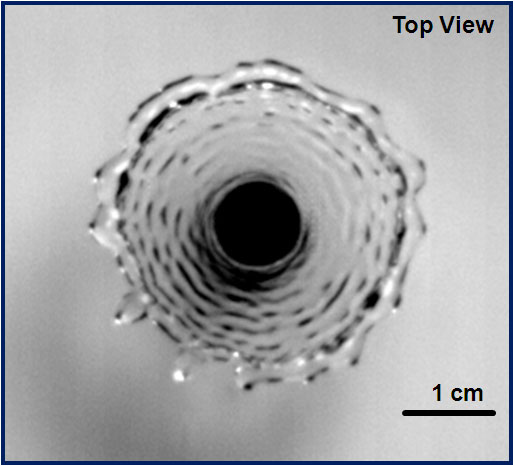Splash: Drop Impact on Small Targets
Cynthia Ericksen
Drazen Drazen Dragutinovic
Paulo E. Arratia
Department of Mechanical Engineering & Applied Mechanics, University of Pennsylvania
Drops impacting on surfaces are often seen in nature and in everyday life. For example, nail-like jets and bubbles are familiar spectacles when rain falls on puddles and ponds. Here, the dynamics of drops impacting small targets is investigated in experiments using high-speed imaging up to 30,000 frames per second. We consider a situation in which the typical length scale of the target is of the same order of magnitude as the drop so that the liquid/solid interaction is minimized. The targets are small, long cylindrical posts made of Delrin; they are 5 cm long and 0.8 cm in diameter. Drops are formed using a syringe pump and are allowed to hit the vertical posts under free-fall at a speed of approximately 3 m/s.
A sample snapshot (Figure 1) shows that an impacting water drop quickly spreads and deforms into a two-dimensional liquid lamella. This thin water sheet becomes unstable due to surface tension, and waves of distinct length are observed. In addition, a thick rim is formed at the edges of the liquid lamella, which also becomes unstable. This rim later develops multiple jets, which in turn break up into small droplets in a process similar to the Rayleigh-Plateau instability.
Reporters and Editors
Reporters may freely use this image. Credit: Paulo E. Arratia (University of Pennsylvania).
